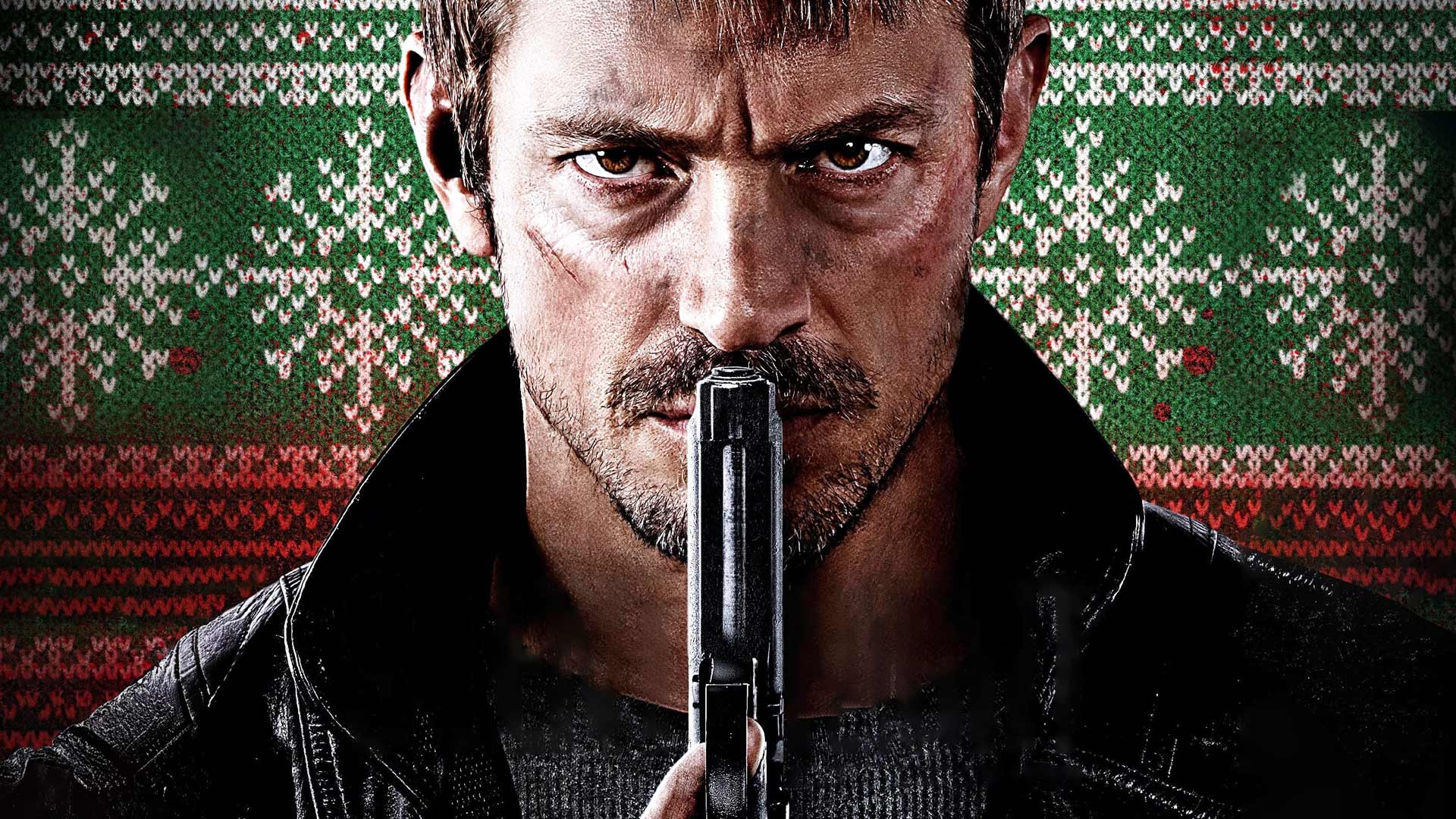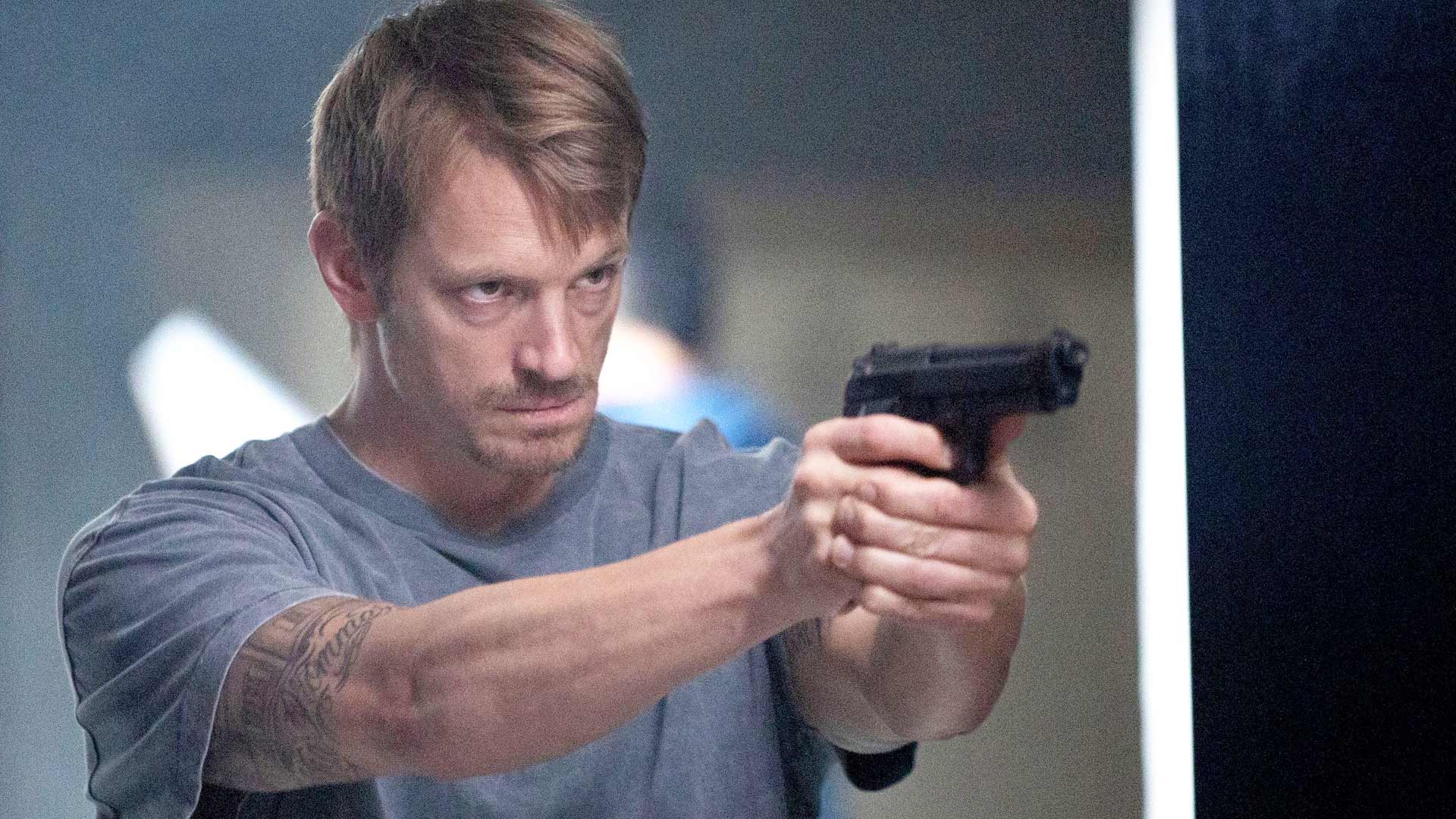Silent Night is John Woo’s sickly stylish, dialogue-free return to American filmmaking

Legendary action director John Woo returns to form with Silent Night, a film that makes audacious decisions with its sound design, escalating tension, and voiceless lead character. Here’s Luke Buckmaster’s thoughts.
Action auteur John Woo’s first American film in two decades might ordinarily be received as a rote revenge thriller—about yet another violent vigilante pursuing bloody comeuppance—were it not for its central gimmick: there’s almost no spoken dialogue. The closest we get are bursts of words that are more like ambient noise, including snippets from police radio and muffled cries from bad guys. Joel Kinnaman’s grimly determined protagonist Brian gets shot in the neck in the opening minutes, providing a narrative reason for his speechlessness, though such a justification isn’t necessary: for instance Nicolas Cage in Willy’s Wonderland fought possessed animatronics and simply never said a word.
Reincarnations of the gruff ancient warrior are often rather stoic and reticent characters—think Clint Eastwood’s Man with No Name, and Mel Gibson and Tom Hardy’s Road Warrior. Kinnaman is more like an angel of death, escorting nasty pasties to hell, the ends justifying the means. This makes him more in line with another silent protagonist: Jorma Tommila’s Nazi-slaying prospector in this year’s Sisu. Whereas that film is an explosion of cartoonish grotesquery—a Road Runner cartoon that arms and enrages the flightless bird, who has now finally snapped, chk-chk boom—Woo keeps a straight face while getting among the muck and grime.
Silent Night is stylishly sick looking, with a gangrenous colour palette and production design tuned to the smell of a stinking dumpster. It’s not top tier Woo (see: Face/Off, Hard Boiled, The Killer) but it’s an engrossing, well executed work with a refreshing air of audacity. Given his last two American films were the dreadful sci-fi Paycheck, and the so-so war drama Windtalkers, Silent Night marks a return to form—perhaps even a new kind of form, given its experimental aspects.
The camera begins high in the sky, descending towards suburban streets, colliding with a red balloon that symbolises the loss of Brian’s son, using the only colour that simultaneously evokes love and danger. The frame moves to ground level, with artfully shot slow-mo footage of Brian running, blood on his hands, moving to the sound of a slow heart heart. Silent Night’s tagline reads: “action speaks louder than words.” But Woo makes a point, right off the bat, that actions can be revealed through sound too. We hear sirens, screeching cars and gunfire—dramatic events, or background details, communicated aurally.
One might expect Woo to crank up the immersive elements of his soundtrack in compensation for the lack of spoken words. But he does something more interesting: hollows the soundspace out, makes it feel tinny and sparse, like you’re hearing this world but not really listening. During one mano-e-mano fight scene in the first hour, the sounds of blows, stabs, and bodies falling and crashing don’t register the way they usually would. It’s like there’s a wall separating the action from us; like we’re listening through a sheet of protective glass. This unusual approach is more than a once-off, deployed several times including during the finale.

The other very interesting technique Woo uses involves flashback-like moments deployed without cutting to another setting. One early scene depicts Brian returning home to his young son, who warmly embraces him, soccer ball at the ready. But this is a memory, a chimera. In present reality the soccer ball is old and deflated, and the boy is dead. By bringing this moment from the past into the same setting, Woo maintains spatial consistency while temporally displacing us. Variations of this technique are a big deal in virtual reality productions, where it has new-found significance—because cutting to another setting feels particularly sharp and displacing in VR. I recently wrote about this in relation to how a puzzle game, The 7th Guest VR, deploys a similar approach to Woo, grounding us within particular locations while juggling timelines.
With Silent Night, those looking for non-stop hardboiled carnage may wish to temper their expectations. It’s not a thrill a minute: Woo stretches out the protagonist’s grief period then devotes scenes to him levelling up, the pace never slow but certainly unhurried and the action teased out. When the film feels like its treading water, delaying the inevitable, it’s also ratcheting up anticipation, as we wait for the flicking of the switch and the dawn of hardcore revenge-a-rama. The viewer would be totally correct to assume that this film delivers the goods—with more than a little chutzpah and panache.


















